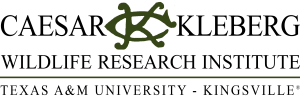
Effects of Prescribed Burning on Butterfly Populations in Coastal South Texas
ABSTRACT
The majority of flowering plants worldwide, including major agricultural crops, rely on insects for pollination. With major declines seen in insect populations in the past three decades, pollinator conservation is becoming more important. Prescribed fire can be a useful tool in rangelands for reducing dead plant matter, recycling nutrients, and promoting new plant growth. We investigated effects of prescribed fire on butterfly populations in coastal South Texas. We burned sixteen plots in either winter or summer, and compared them to control plots. Plots ranged from 500 to 1,200 acres and were located in areas dominated by either gulf cordgrass or seacoast bluestem. We conducted butterfly surveys monthly to see how their populations responded to fire.
- There were only a few months in which either butterfly abundance or diversity was different in the plots that were burned, and differences often showed no clear effects of either summer or winter burns.
- Butterfly numbers were sometimes lower immediately following burning, particularly summer burning, but rebounded within two to three months.
- While we found that season of burning made no noticeable differences, providing burned and non-burned areas may offer ideal habitat for butterflies by maintaining a variety of both host and nectaring plants at various growth stages.
ADDITIONAL INFORMATION
Bipartite D3 Network
Bipartite D3 Network is an interactive Bipartite Network for all Butterfly/Flower interactions totaled from March 2020-February 2022 on the El Sauz Ranch. The three columns contain all the interactions between Nectaring Flowers (Left) and Butterflies (Right) placed into prescribed burning treatment seasons. Summer= Summer burned unit, Winter= Winter burned unit, and Control= Non-burned control unit.
This network shows interactions between nectaring butterflies and flowering plants; specifically, it shows which butterflies (right) were feeding on which plants through lines connecting butterfly to flower.
To use Bipartite D3 Network
Hover over a butterfly or flower and the interactions for each treatment will be highlighted. Values show the percentage of butterflies nectaring on a flower (if mouse is hovering over a flower) or percentage of flowers utilized by butterflies (if mouse is hovering over a butterfly).